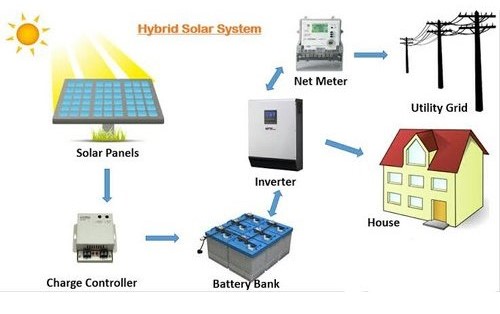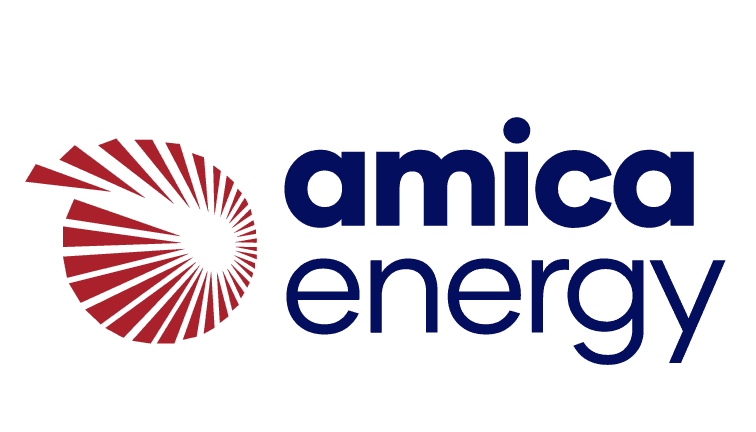
Introduction
As renewable energy tech advances, hybrid solar systems are gaining popularity. They are a common way to capture sustainable power. A hybrid solar system combines solar energy with other sources, like wind or batteries. It provides a reliable and efficient power supply. We’ll look into hybrid solar systems’ definition, operation, and advantages in this blog. To help you understand this tech, we’ll add some SEO keywords. These include “hybrid solar wind power generation system abstract” and other related terms.
Understanding Hybrid Solar Systems
A hybrid solar system is an energy solution. It combines solar electricity with another power source or storage. The two most popular hybrid systems are solar-plus-battery storage and solar-wind hybrids. Hybrid systems combine many energy sources. They provide a reliable power supply. This is key in areas with erratic weather or frequent outages.
How Hybrid Solar Systems Work
Hybrid solar systems use solar panels with an extra power source or storage device. Let’s examine the two primary categories of hybrid systems in more detail:
-
Solar-Plus-Battery Storage Systems:
- Solar panels: They collect solar radiation and use it to generate power.
- Inverter: Most household devices need AC electricity. The inverter makes it from DC electricity produced by the solar panels.
- Battery storage: It stores extra solar energy produced during the day. It can use this at night or on cloudy days.
- Grid Connection: These systems usually connect to the grid. This lets users buy energy when needed or sell excess energy back to the utility company.
In a solar-plus-battery system, the solar panels generate power. Extra power is stored in the batteries during the day. The system uses the batteries as power when the sun isn’t shining. The system can still obtain power from the grid even in the event that the battery storage runs out.
-
Solar-Wind Hybrid Systems:
- Solar panels: They gather solar radiation and transform it into electrical power.
- Wind turbines: These devices harness wind energy to produce power.
- Inverter: The inverter converts DC electricity from wind turbines and solar panels into AC electricity.
- Battery storage (Optional): Stores extra energy from the wind turbine and solar panels.
Both solar and wind energy can be used to create power in a hybrid system. Since it is unlikely that wind and sun conditions will be bad at the same time, this combination ensures a steadier electricity supply. To store excess energy for use when solar and wind power are low, these systems may add battery storage.
Benefits of Hybrid Solar Systems
Hybrid solar systems have benefits over conventional solar or wind-only systems. Here are a few of the main advantages:
Enhanced Reliability:
Hybrid systems offer a more dependable power source by integrating several energy sources. One source can make up for its absence (lack of sunlight) with another (wind or battery energy).
Energy Independence:
By lowering dependency on the grid, hybrid systems can increase their energy independence. This is especially helpful in places where there are frequent outages or unstable grid power.
Cost reductions:
Hybrid systems may need a bigger upfront investment. But, they may cut costs a lot in the long run. You can cut or eliminate your electricity costs. Produce your own energy and sell any excess back to the grid.
Environmental Benefits:
Hybrid systems use renewable energy. They reduce your carbon footprint and emissions. This helps create a more sustainable and clean future.
Flexibility:
Hybrid systems can be modified to accommodate certain energy requirements and circumstances. Hybrid solutions can be tailored to your needs. They can be a backup power source for your home. Or, they can be for a remote off-grid site.
Hybrid Solar Wind Power Generation System Abstract
Let’s look at an abstract of a hybrid solar wind power producing system to further explore the idea. These systems optimize energy output by combining wind turbines and solar panels. The abstract would outline the hybrid approach’s benefits. It would cover its efficiency, optimized energy output, and integration of both technologies.
An abstract would typically cover the following topics:
- Objective: Create a system that uses wind and solar energy. It should provide a steady, uninterrupted power source.
- Methodology: Combine wind turbines and solar panels. Use inverters and add optional battery storage for extra electricity.
- Results: less reliance on fossil fuels, better energy efficiency and reliability, and potential cost savings for users.
- Conclusion: Hybrid solar and wind power systems provide a practical, sustainable energy solution for many settings.
Key Considerations for Hybrid Solar Systems
Several considerations need to be made when thinking about a hybrid solar system:
Location: Evaluate your area’s solar and wind resource availability. The best places for hybrid systems to work are those with lots of wind and sunshine.
Energy Needs: Analyze your usage trends. Then, create a solution that meets your needs. Think about seasonal changes, peak demand periods, and backup power requirements.
System Components: Choose high-quality solar panels, wind turbines, inverters, and batteries. These are key system parts. These parts’ durability and efficiency will affect your system’s functionality.
Installation and Maintenance: For the installation and upkeep of your hybrid system, use qualified specialists. A proper installation is essential for both safety and maximum performance.
Financial Incentives: Check for subsidies, tax credits, and rebates for renewable energy. They can greatly reduce the upfront cost of your hybrid solar system.
Real-World Applications of Hybrid Solar Systems
Hybrid solar systems have many practical uses. They provide sustainable energy to various industries.
Residential Use: Hybrid systems can benefit homeowners. They lower electricity costs and reduce reliance on the grid. They also provide power during outages.
Commercial Use: Hybrid solar systems can help businesses meet sustainability goals. They can also cut costs and provide energy independence.
Remote Areas: In off-grid areas, hybrid systems can provide reliable power. This can boost local development and residents’ quality of life.
Agriculture: Farmers can use hybrid systems to power their machines, irrigation, and other equipment. This will lower costs and boost output.
Public Infrastructure: Hybrid systems can be installed in public buildings, hospitals, schools, and government offices. They will ensure a reliable, sustainable power supply.
Prospects for Hybrid Solar Systems in the Future
With tech breakthroughs and a push for sustainable energy, hybrid solar systems have a bright future. Innovations are expected to improve hybrid systems. They include better battery storage, more efficient solar and wind turbines, and smarter energy systems.
Hybrid solar systems are key to a sustainable energy future. This is true as long as global governments fund renewable energy. These systems can use solar and wind energy. They can provide reliable, cheap, and green energy for various uses.
Conclusion
Utilizing hybrid solar systems is a creative and practical way to capture renewable energy. These systems provide a cheap, green, and reliable power source. They combine solar panels with wind turbines or batteries. Hybrid solar systems are a flexible, sustainable solution. They can lower your electricity costs and help you be energy independent. They can also benefit the environment.
As technology improves, hybrid systems will be cheaper and more efficient. This will make them more attractive to businesses and homeowners. Knowing the pros and cons of hybrid solar systems can help you. You can then make an informed choice. This will bring you closer to a sustainable energy future.
